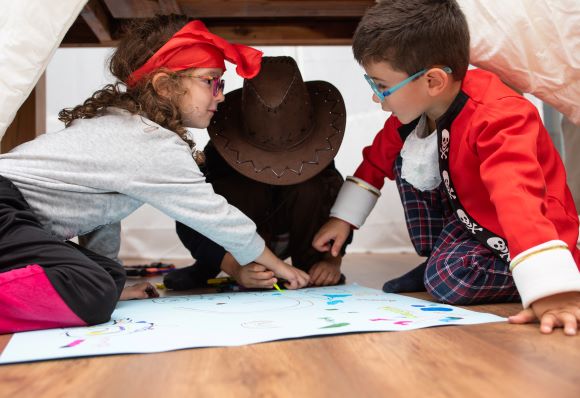
The answer is that any toy that encourages play is good for a child's development, so we need to look at the wealth of research on play. Studies consistently find that children thrive when they have the opportunity for play that is:
- Deep - The child has the opportunity to be immersed in the play for long periods of time.
- Unstructured and Self Directed - If an adult directs the play, it is by definition not self-directed by the child. If the toy is "structured" to be used only in certain ways, then it is by definition not encouraging exploration or creativity.
- Imaginative - Fantasy or "make believe" play allows children to develop their imaginations, whether that play is with others or alone. Imagination facilitates learning and is the source of all creativity and accomplishment. Fantasy play also allows children to process whatever emotional issues they are working on, so it's important for emotional development.
- Creative - Play is inherently creative, if it is unstructured and self-directed. That gives children the opportunity to invent, experiment, combine things in new ways. The experience of creativity, or being "in the flow" is one of the most rewarding and stimulating experiences in healthy human development at all ages.
- Explorative - Children learn when they explore, test out their ideas, solve problems, think critically, and try new things.
- Social - Not all play needs to be social, because children also need time alone for exploration and creativity. But when children engage in cooperative play with others, they develop executive function skills like delayed gratification, taking turns, self-regulation, receptive and expressive language skills, and solving problems with others. They also strengthen their bond with their playmate or caregiver!
One ten-year study (the TIMPANI study (Toys that Inspire Mindful Play And Nurture Imagination) defined high quality toys as:
- Simple: Toys that inspire the child to use the toy in their play, rather than entertaining the child. "For example, a simple wooden cash register in our study inspired children to engage in lots of conversations related to buying and selling—but a plastic cash register that produced sounds when buttons were pushed mostly inspired children to just push the buttons repeatedly. Similarly, a doll that does the talking for a child will generally result in play that is less imaginative than a simple doll where children have to imagine for themselves what the doll might say," said the authors of the Timpani study.
- Open-ended: Children's play is most creative and sustained with toys that can be used in many different ways, because they encourage the child to develop their own ideas. One example would be building blocks. When my son was four, he spent every morning at nursery school in the block corner with his friends. They would build towers, then a zoo, then a pirate ship.
- Non-realistic: Toys that don't look like something in real life can be adapted to serve any fantasy play. For instance, a colorful scarf can be used to clothe a baby doll, create a dance, wrap pretend food to run away to the forest, or dress for a ball.
The Timpani study especially recommends flexible, open-ended Construction toys such as hardwood blocks, Legos, TinkerToys, and Magna-Tiles, that encourage child-directed building and problem-solving, and Replica play toys such as small people, animals, or vehicles that encourage children to create elaborate, make-believe scenarios, alone or with others.
Many preschool teachers will tell you that children who mimic specific characters from screens play less creatively, because they recreate the stories they've watched instead of inventing their own. So in addition to limiting screens, it's a good idea to avoid characters from shows or movies when you select toys.
The final takeaway from play and toy research is that children engage in a higher quality of play when they have fewer toys. Instead of becoming overstimulated and moving from one toy to the next, they engage in deeper, more sustained and more creative play. (Here's one research study on this from Infant Behavior and Development: "The influence of the number of toys in the environment on toddlers’ play.")
So don't be afraid to buy your child a new toy for the holidays, but consider carefully what you're buying. Get into the habit of cycling toys in and out of the play area, so your child can play more deeply. And remember that toys that your child uses WITH you are the best toys of all!




